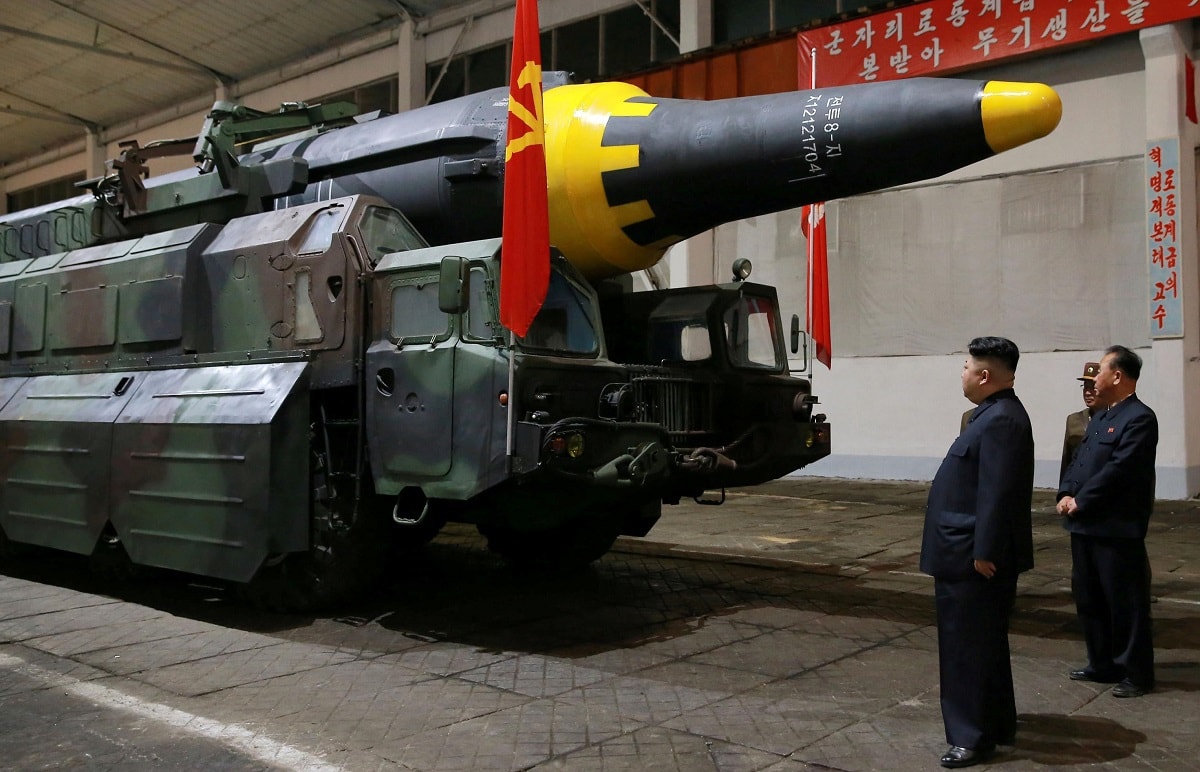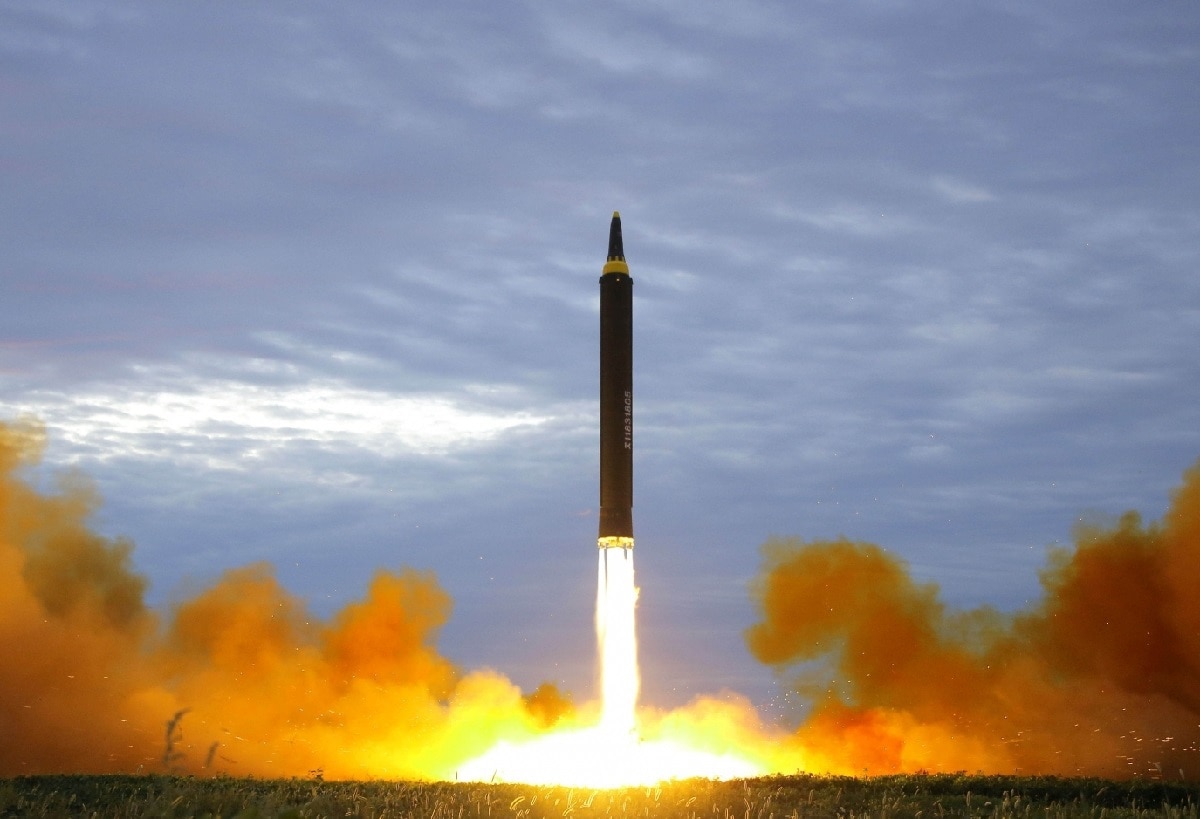What Would a South Korean Nuclear Weapons Program Look Like?: In the last year, a gathering debate has arisen in South Korea about whether it should build nuclear weapons to counter North Korea’s nuclear weapons. North Korea’s relentless missile testing program this year has pushed forward this debate. If the Pyongyang regime conducts another nuclear test – its seventh – that too will accelerate the Southern discussion.
North Korea’s Nuclearization is Pushing the Same in South Korea
The country’s conservative party has already argued that South Korea should withdraw from the Nonproliferation Treaty, which bans South Korean nuclear weaponization if North Korea goes ahead with its seventh nuclear test. The debate is now so serious that the US ambassador to South Korea felt compelled to weigh in. In the fourteen years, I have lived in South Korea and taught international security, I have never seen as much discussion of the nuclear option as in the last year.
North Korea’s relentless march toward better, faster, and more powerful nukes and missiles is pushing South Korea further and further into a corner. Hawkish options which were once deemed too radical or destabilizing – such as airstrikes on North Korean missile sites or South Korea’s own nuclearization – are under discussion now. If South Korea reaches for these more extreme options, North Korea has only itself to blame. Its exorable nuclearization and missilization are the cause; South Korea has been a model member of the NPT. It clearly does not want nuclear weapons. It has long encouraged a non-nuclear peninsula. The North Koreans have said the same while nonetheless nuking up relentlessly. The shape of the South Korean response is now coming into view.
Mutually Assured Destruction
The primary purpose of a nuclear arsenal is deterrence. Nukes best serve to prevent one’s opponents from considering a preemptive nuclear strike. Critically, strategic nuclear deterrence does not end conventional warfare. The US and USSR/Russia have fought numerous proxy conflicts in the nuclear age – Korea, Vietnam, Afghanistan, and Ukraine. But nuclear escalation is inhibited when parties can credibly threaten each other with assured destruction.
A primary justification for Southern nuclearization, then, is to check any North Korean notion that its nukes could be used coercively – as threats to compel compliance from South Korea. Russia has used its nuclear weapons in this way with reasonable success in the Ukraine War. Its oblique nuclear threats of escalation have inhibited an even more robust NATO intervention on Ukraine’s behalf. Were Russia solely a conventional power, NATO might have imposed a no-fly zone over Ukraine or sunk Russia’s Black Sea fleet.
To accomplish this basic deterrent task, South Korea would need a few dozen survivable warheads. ‘Survivable’ means that South Korea could absorb a nuclear first strike by North Korea and still retaliate with atomic arms. If both sides have such survivability, the incentives to strike first decline dramatically. The strategic situation becomes a stalemate of mutually assured destruction (MAD). The result is a cold peace. The ironic outcome of such powerful weapons is stability, as no player wants to take the huge risk of conflict.
Nuclear Weapons: What Does South Korea Need?
To achieve MAD, South Korea does not need a large arsenal. It does not tactical nuclear weapons for use on the battlefield, for example. Nor does it need the high-yield thermonuclear weapons the Americans and the Soviets developed through the Cold War. Nor does it need intercontinental ballistic missiles carrying multiple warheads. Indeed, it needs no more than fifty (probably even fewer) small warheads on platforms that could ride out a Northern first strike. A few submarines with nuclear missiles would be enough. South Korea does not need land-based missiles or bombers. Its arsenal is not intended to threaten China; it only needs to be extensive and diverse enough to deter the North.
This is a crucial point. Much of the resistance to Southern nuclearization stems from fears of a nuclear ‘cascade.’ North Korea’s spiraling, unchecked nuclear program might produce the same in South Korea and Japan. This action-reaction chain is possible, of course, but South Korea has strong incentives to be discipline, restrained, and transparent about its nuclearization.
Seoul does not need a large arsenal to deter North Korea. Its purpose is strictly defensive. It only needs a few dozen warheads on a few dozen missiles on a handful of submarines to achieve this. Its political purpose is to compensate for American alliance anxiety now that North Korea strike the US homeland. South Korean nukes serve to lessen allied tension, via ‘self-insurance,’ over the thorny question of US willingness to fight a nuclear war on Seoul’s behalf. They are, very obviously, not intended as offensive weapons nor as threats to China

Image of Hwasong-12 IRBM. Image Credit: KCNA.
.
This South Korean move would clearly be controversial. But it is important to note that this can be done in an open, public way, with clear explanations of Seoul’s (justifiable) reasons and with a minimal arsenal focused on one task. If North Korea and China do not like this outcome, let them finally negotiate peninsular arms control seriously after decades of gimmicks.
Expert Biography: Dr. Robert E. Kelly (@Robert_E_Kelly; RoberEdwinKelly.com) is a professor of international relations in the Department of Political Science at Pusan National University and 19FortyFive Contributing Editor.


Jack
November 21, 2022 at 7:56 am
South Korea and Taiwan should have about 10 Nukes each.
403Forbidden
November 21, 2022 at 7:58 am
Yep, seoul could build a nuke arsenal for itself, but first it must stand on its feet.
Absolutely no nanny standing behind that nuke arsenal ready to ‘press the nuke button’ on behalf of seoul.
You can’t eat your cake and keep it.
Nukes, yes, nanny no.
Nanny yes, nukes, no.
self
November 21, 2022 at 8:34 am
And yet NO ONE talks about Taiwan or Japan building their own nuclear arsenal.
Why is that?
Red China is the big problem and the only way for these “conventional” country to survive is… you guessed it…. Nukes with a good means of delivery.
Balance of power of achieved.
Neil Ross
November 21, 2022 at 9:41 am
I wonder what it would take to get North Korea to point its missiles in the opposite direction?
John
November 21, 2022 at 10:20 am
Nukes for Japan and SK for self preservation.
US nuclear umbrella fading away.
If SK and Japan refusing to go nuclear, will only have to blame themselves for future deterrence failure
Arash
November 21, 2022 at 4:31 pm
NPT is absolutely nonsensical.
It’s nuclear apartheid, unilateral disarmament and just another tool for major countries to control and order around smaller countries.
Israel, India and Pakistan are not in NPT and getting free pass to build hundreds of nukes each.
Iran is in NPT and its nuclear program under most detailed monitoring ever and all it’s getting is endless sanctions and “maximum pressure”!
You have no idea what a load call there is within Iran to abandon this nonsensical pact which is nothing more that unilateral disarmament.
Arash
November 21, 2022 at 4:42 pm
NPT is absolutely nonsensical.
It’s nuclear apartheid, unilateral disarmament and just another tool for major countries to control and order around smaller countries.
Israel, India and Pakistan are not in NPT and getting free pass to build hundreds of nukes each. Meaning, they do not receive any pressure from the US, withholder of “Rules based order!” to join NPT.
Meanwhile, Iran is in NPT and its nuclear program under most detailed monitoring ever and all it’s getting is endless sanctions and “maximum pressure”!
You have no idea what a load call there is within Iran to abandon this nonsensical pact which is nothing more than unilateral disarmament.
Ben d'Mydogtags
November 22, 2022 at 12:30 pm
The US under Biden is too weak to deter enemies, too weak to protect allies and therefore too weak to hold-back allies from taking matters into their own hands. And make no mistake, once those allies have the means to defend themselves without the US they will no longer need to defer to the US.
Expect other long-time allies to resume nuclear weapons development. The US formerly was strong enough militarily, economically and diplomatically to prevent this. No more.
Saudi Arabia, Taiwan, South Korea, Japan are all likely to be heading in this direction. They all know their security can no longer depend on US power. They all either have the fundamental technology already or can buy it.
Weakness invites chaos and conflict.
lupus
December 2, 2022 at 6:52 am
North Korea developed nuclear weapons to defend itself from the US albeit the main purpose of the US being there is to surround China. The solution to nuclear proliferation in East Asia is for the US to go home. North and South Korea would soon sort out their differences, China and Taiwan likewise. The minor conflicts in East Asia are just a convenient excuse for the US being there blocking Russia and China. Remember “the ugly American” ? He’s back.